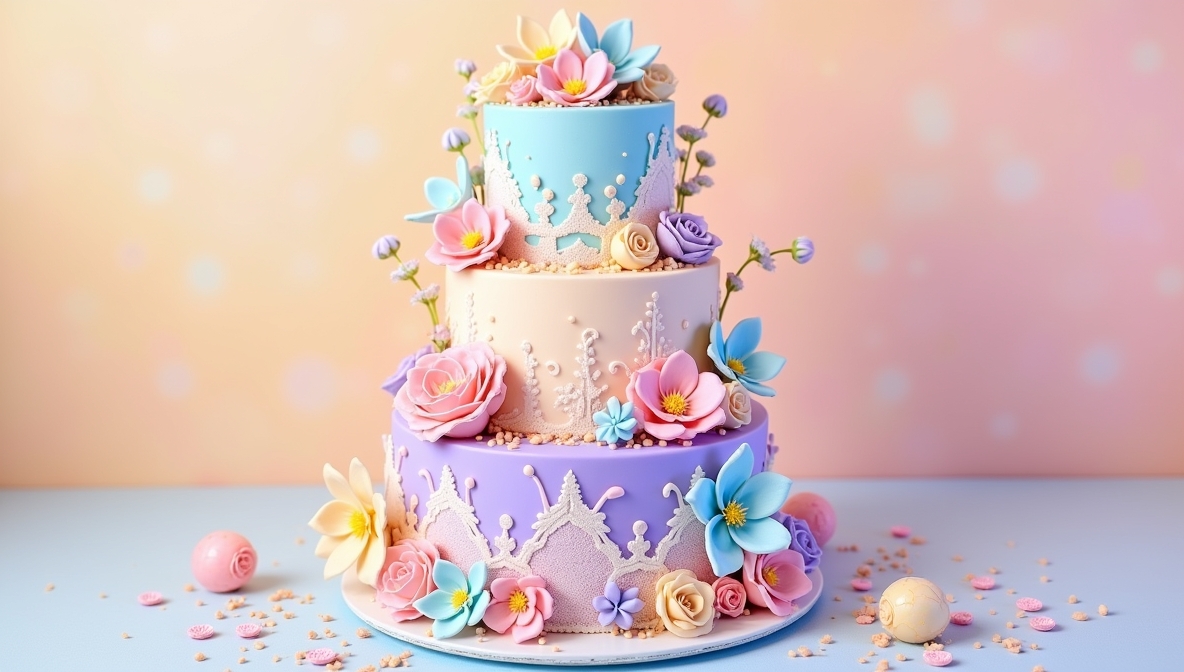The Art of Cakes: A Culinary Masterpiece

Introduction: What Makes Cakes So Special?
Cakes aren’t just desserts; they’re edible special celebrations. Think about it—what’s the first thing that comes to mind when you hear the word “birthday” or “wedding”? Yep, it’s the cake. These sugary masterpieces have a way of turning any ordinary moment into something magical. But what makes cakes so special? Is it the taste, the design, or the sheer joy of sharing them with loved ones? Let’s dive in and explore this sweet world.
A Brief History of Cake Baking

The Evolution of Cake Ingredients
Baking a cake centuries ago wasn’t as simple as picking up pre-mixed ingredients from a store. Ancient cakes were often dense and made with basic items like honey, nuts, and grains. Over time, though, sugar became widely available, and cakes evolved into the fluffy, sugary treats we know today.
Traditional vs. Modern Styles
Art of traditional cakes like pound cake and fruitcake are still loved, but the modern baking scene has exploded with innovation. From mirror-glazed cakes to cakes made with exotic flavors like matcha or lavender, the art of cakes has truly transcended boundaries.
Ingredients: The Building Blocks of a Perfect Cake
Essential Ingredients for Every Cake
No matter how fancy a cake looks, its essence lies in the ingredients. Let’s break them down:
Flour: The Foundation
Flour gives structure to your cake. All-purpose flour is common, but did you know cake flour makes for a softer crumb?
Sugar and Sweeteners: The Magic Touch
Sugar doesn’t just sweeten; it also helps cakes brown and stay moist. Some bakers experiment with alternatives like honey or agave syrup.
Eggs: Nature’s Binding Agent
Eggs are the unsung heroes of cake-making. They bind everything together while adding richness and texture.
Techniques That Define Cake Artistry
Mastering the Batter: Mixing Techniques

Overmixing or undermixing your batter can spell disaster. The secret? Mix just enough to combine the ingredients without overworking the gluten.
Baking Secrets: Timing and Temperature

A perfectly baked cake requires precision. Too hot? The cake burns. Too cold? It’ll sink in the middle.
Decorating Cakes: Where Creativity Shines

Piping Mastery: Turning Frosting into Art
Piping is like drawing, but your canvas is a cake. From rosettes to intricate borders, it’s all about steady hands and practice.
Fondant Sculpting: Crafting Edible Designs
Fondant is the clay of the cake world. It lets you sculpt everything from flowers to figurines.
Types of Cakes: Endless Possibilities
Classic Cakes: Timeless Favorites

Think fluffy vanilla sponges, decadent chocolate cakes, and tangy lemon drizzles—classics never go out of style.
Modern Trends: Fusion and Minimalism


Modern bakers experiment with fusion flavors and minimalist designs. Matcha chiffon, basque cheesecakes, and drip cakes are just a few trending delights.
The Role of Cakes in Celebrations
Weddings: The Crown Jewel

The wedding cake is often the centerpiece of any reception. From tiered creations to personalized designs, they symbolize love and unity.
Birthdays and Milestones

No birthday is complete without cake. Whether it’s a simple sheet cake or an elaborate custom design, it’s a must-have for celebrating life’s big moments.
Seasonal and Holiday Specialties
Christmas fruitcakes, Halloween-themed designs, and Easter egg-shaped treats—cakes bring festive cheer to every season.
Conclusion: The Timeless Joy of Cake Making
Cakes have been around for centuries, and they’re not going anywhere. Whether you’re baking a simple sponge or crafting a multi-tiered masterpiece, the joy of cake-making is unmatched. So, roll up your sleeves, grab some flour, and start creating your own edible works of art!
FAQs About the Art of Cakes
1. What is the most important ingredient in a cake?
While every ingredient matters, flour and eggs are critical for structure, while sugar adds flavor and moisture.
2. Can I make cakes without eggs?
Absolutely! You can use substitutes like applesauce, yogurt, or commercial egg replacers.
3. What’s the secret to a moist cake?
The secret lies in not overbaking and adding ingredients like buttermilk or yogurt for extra moisture.
4. How do I store leftover cake?
Wrap it tightly in plastic wrap and store it in the fridge. Bring it to room temperature before serving.
5. What are the best tools for beginners?
Start with a hand mixer, a good set of pans, and basic decorating tools like piping tips and spatulas.



